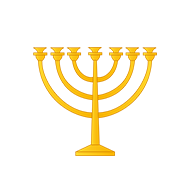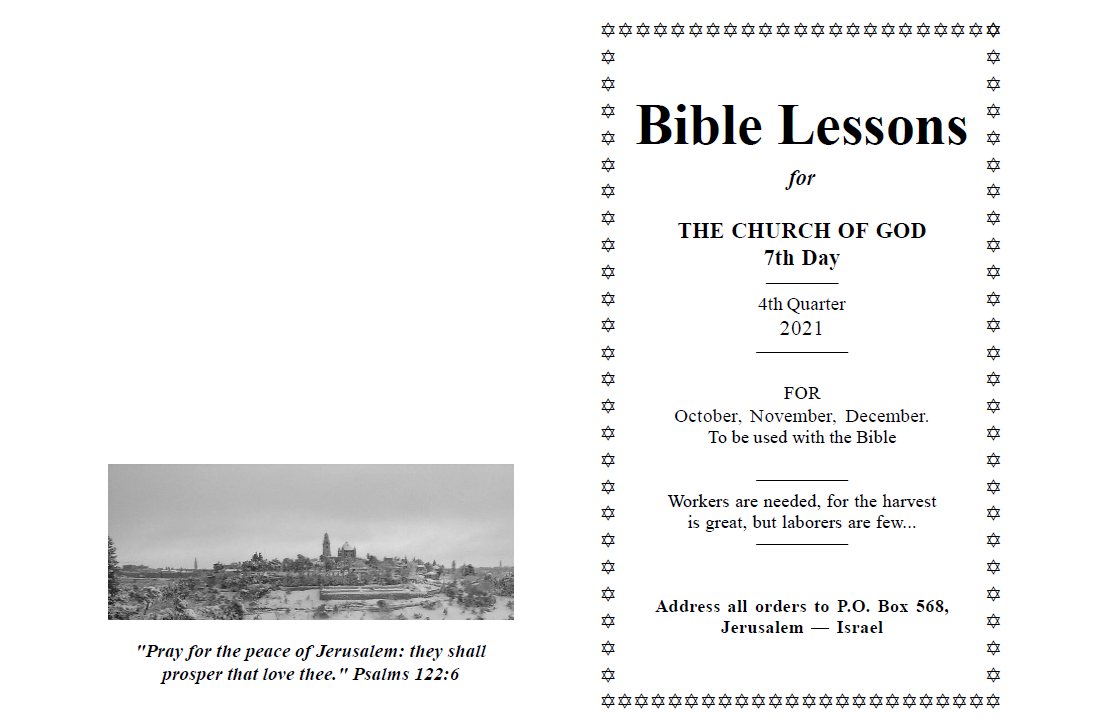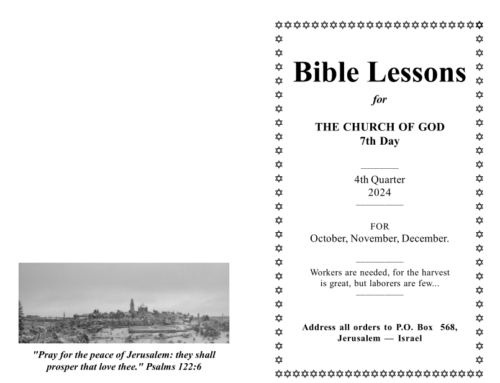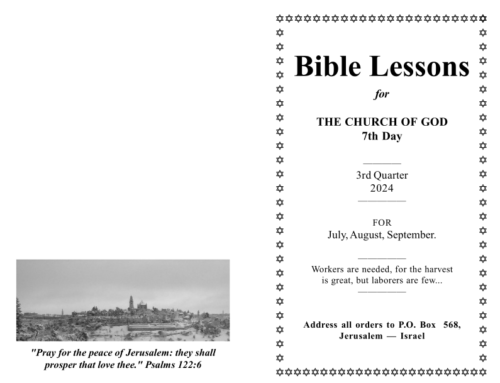Lesson for October 23, 2021
THE MINISTRY OF OUR SAVIOUR IN GALILEE
Scripture reading: Matthew 14:1-23.
Memory verse: Matthew 14:23.
- Why did Herod cast John into prison? What restrained him from taking the life of John, and what did Herodias want done? Matthew 14:3-5.
Note. His proof of being the one who would restore the Kingdom to Israel was not by a demonstration of overthrowing kingdoms by the might of armies forces, and devices of death; but through speaking to the hearts of men and women, of mercy and love, by healing the sick and raising the dead.
- What testimony did our Saviour give for the work and character of John? Matthew 11:7-11.
- What rash vow did king make at his birthday banquet? Matthew 14:6, 7.
- How did Herod keep his promise? Matthew 14:8-11.
Note. This ordeal was permitted to come upon John for the sake of thousands the Saviour knew were to come to their end as martyrs, but not forsaken of God. As John, whose faithfulness the Saviour Himself had bore witness, had suffered an untimely death, so were many to follow and drink the same cup. They were also to languish in lonely prison cells, who “would love not their lives unto death” Revelation 12:11; Matthew 24:8, 9. Heaven was moved at Steven’s death. Acts 7:56.
- What was the effect upon Herod of the Miracles of our Saviour? Matthew 14:1, 2.
Note. This shows that the sin of Herod was tormenting him and he was seeking relief of his guilty conscience. He thought that John has been raised from the dead and sent forth now with greater power. There is no torture keener than the sting of guilty conscience.
- In preaching at Nazareth, what prophesy did the Saviour apply to Himself? Luke 4:17-21; Isaiah 61:1, 2.
Note. By comparing Isaiah 61:2 with Luke 4:19 we see that He only read half of Verse 2 in Isaiah and then closed the book (Luke 4:20, 21), and told the people that this prophecy was then fulfilled in their ears. He could not have said this if he had read the entire verse because the last part has not yet met its fulfillment. This shows us the length of time that is often covered by just one verse and of the importance to “rightly divide the scriptures”. The same applies to Isaiah 2:3, 4. The 2nd verse where “The last days” are mentioned applies to this age, while Verse 4 pertains to the Kingdom age.
- What did the Saviour tell the people that revealed His knowledge of conditions in their land? Luke 4:22-27.
- How did He escape from their threatened violence? Verses 28-30, Compare Psalms 34:7
- After His rejection in Nazareth, to what city did He go? Luke 4:31-35, and Matthew 4:13-15.
- How was He first received at Capernaum, and what of His fame? Luke 4:36-37.
- Whose house did He enter when leaving the Synagogue, and what was the result? Verse 38, 39; Matthew 8:14.
Note. We find from this text that Simon’s wife is referred to. Since this Simon was Simon Peter, we learn from the text that he had a wife. Although the Catholics claim him to have been their first pope or leader, yet they do not permit their priests to marry. This is a good text to use in showing them the error of this unscriptural practice.
- What other miracle was also done at Capernaum? Matthew 8:5-10 and verse 13.
- What prophecy was given concerning the future of the great city of Capernaum? Matthew 11:23.
Note. We have visited the old site of Capernaum many times and there is absolutely nothing left of the city except a portion of old synagogue in which our Saviour preached so often and where miracles were wrought. It was told to us that three different priests have tried to rebuild the Synagogue, and each time the one undertaking it was mysteriously stricken and died. We saw evidence of this last attempt to rebuild it, in the reconstruction of one wall. There is not one prophecy that our Saviour gave but what has been most wonderfully fulfilled in every detail concerning this country and the events were to take place in the world.




Leave A Comment